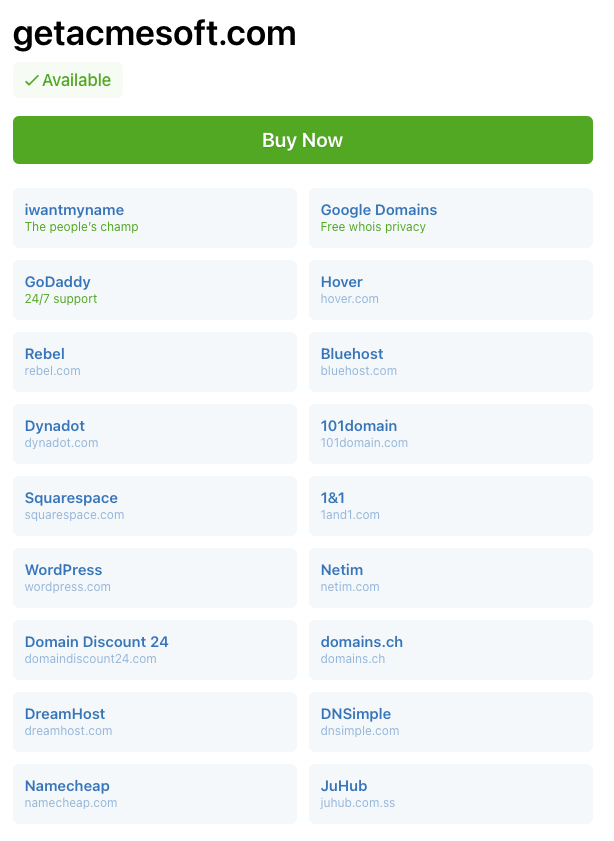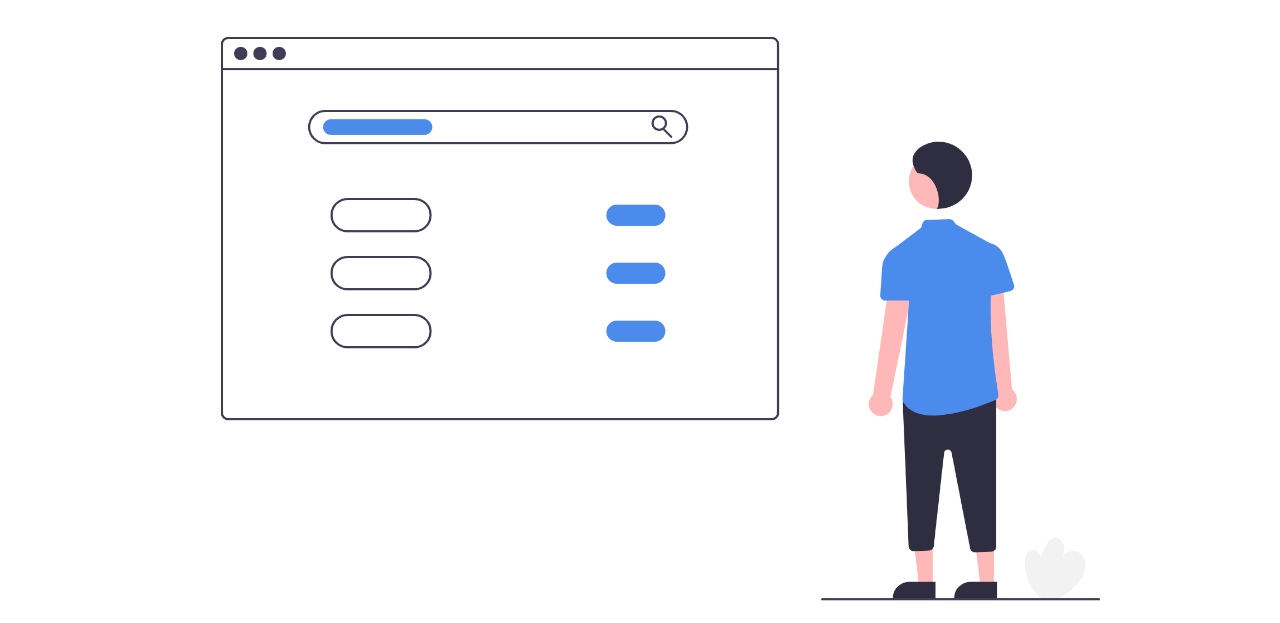So, you’re starting a business, looking to do a rebrand, or about to invest in a company that has an amazing product/service but really needs a new name. What’s the easiest way to find domain availability?
Throughout my career in marketing I’ve had to do this exercise hundreds of times for clients - and secretly, hundreds of times for myself - #DomainHoarder
Have you ever started your domain search on a domain provider like GoDaddy, NameCheap, or Domains.com? You navigate back-and-forth between domain providers, and maybe you search for a name and are undecided, so you go back the next day and...
You guessed it…
The price has gone up! What?! I had no idea that MyAmazingUniqueCompanyDomain.com was in such demand!
Still undecided?
The price is higher again the next day.
I’m writing this article because this needs to stop, and in today’s world with the amount of Top Level Domains (TLDs) available today, the “normal” domain search process is more labor-intensive (and manipulated) than I would like it to be, and it can be hard to decide what to go with - it’s a long-term commitment.
So, in this article, I will be sharing four expert tips that will help you find and buy available domains quickly, for the right price, and without even clicking the search button.
Tip 1: Do not go to domain providers
Through years of experience, domain providers have become creative in finding new ways of generating revenue. One of which is leveraging cookies to recognize returning visitors, and map them to their search history - that is how they are able to do their convenient price adjustments.
Leverage a third-party provider to search across all providers of various different TLD variants. I personally recommend domai.nr (aka “Domainr”).
The great thing about this tool is that you can start by clicking the search bar on the top left, typing a name, without any of the domain extensions at the end, even if you have spaces in the name - and the Tool does all the searching… without hitting the “search” button!
Here is an example of it in action for an example brand that we can call “Acme Software”

As you type, the tool does all the work on-the-fly to find all the available options across multiple websites. Once you've decided on a name, click it, and you will find the sites that have it available for sale.

There are other alternatives to search for domain availability and buying domains, like:
Domainr is my recommended option because of its simplicity and outstanding user experience.
Tip 2: Ensure other Top Level Domains (TLDs) are available
It's great to think about what your website domain will be, and to secure that domain, however, you need to think more holistically about the company, the product, marketing initiatives like ABM, and potential competition.
If you are selling a SaaS solution, you may want to host your product on a separate TLD, though a subdomain is completely fine as well. But when you are thinking about running ABM campaigns that involve cold emails, you don't want to put your main website domain at risk of being flagged as a spam domain. If that happens, not only will it impact organic rankings, but also potential email delivery to your own customers (and they really want to receive your emails)!
Tip 3: Decide and commit (for the long -term)
Once you land on a name that you love, pick a provider, and buy it immediately.
Something a lot of people are not aware of is the element of SEO with domains. Too many people think about having their main keywords in the domain, without thinking enough about domain authority and expiry date.
Expiry date?
Yes!
The search engines look at when a domain will expire, and the further out that domain expiry is, the more of a trust signal it is. Think of this as more from a negative lens that you want to avoid rather than a positive ranking factor. Think of all the spam or burner domains that people use - usually, they're registered for the smallest amount of time, then expire. So that negative association with spam and short registration times can impact you when you're trying to warm up a domain, and even trying to rank a website.
Looking for proof? Real-world experience - that's the proof. I have worked with various companies doing all sorts of work throughout the various changes, since 2006.
Register your domains for five years - the cost commitment is nothing in the grand scheme of the foundation that you're building for your company.
Tip 4: Buy all the Top Level Domains
You are now thinking like some of the world's top domain buyers.
The .com domains are still the most sought-after names and are the most valuable because they have been there from the beginning, and have a foundation across the entire web, regardless of which region you are doing business in - .com domains are #1 so try and find a name that has the .com TLD available.
If it's not available, you can always become such a success that money is not as much of an issue to secure your brand's .com version of the domain for a six to seven-figure price tag. These are exceptional cases, but not impossible - for example, Zoom (yes, THE Zoom) which was zoom.us has recently acquired zoom.com but the .us domain has so much brand power that they only bought the domain because of the volume of people searching for Zoom and trying to type Zoom.com in the URL (imagine the number of support tickets when you have a footprint of that size!). Gong (gong.io) is another great example - while gong.com is pointing to a smaller company, likely, there will be an acquisition (and redirected right back to gong.io) sometime in the near future.
With the long-term in mind, it is time to build a secure perimeter around your brand name. Buy all of the domain alternatives in the event that a potential competitor, or another company from another industry wants to buy the name (Perhaps Mr. Acme himself wanted to start a soft, plush furniture company called AcmeSoft).
When you have another brand acquire the same name but as a different TLD, there is a risk of dilution of your brand. Then it becomes a race to which brand dominated more of the search volume B2C will win most (not all) of the time compared to B2B because of the sheer volume potential, but B2B vs. B2B - it's game on!
TL;DR
Domain providers have gamed the system. Use a third-party tool to search, make sure other TLDs are available, buy them quickly, and buy them all!
Note: Kalungi and I are not affiliated with Domainr or its partners or affiliates.
